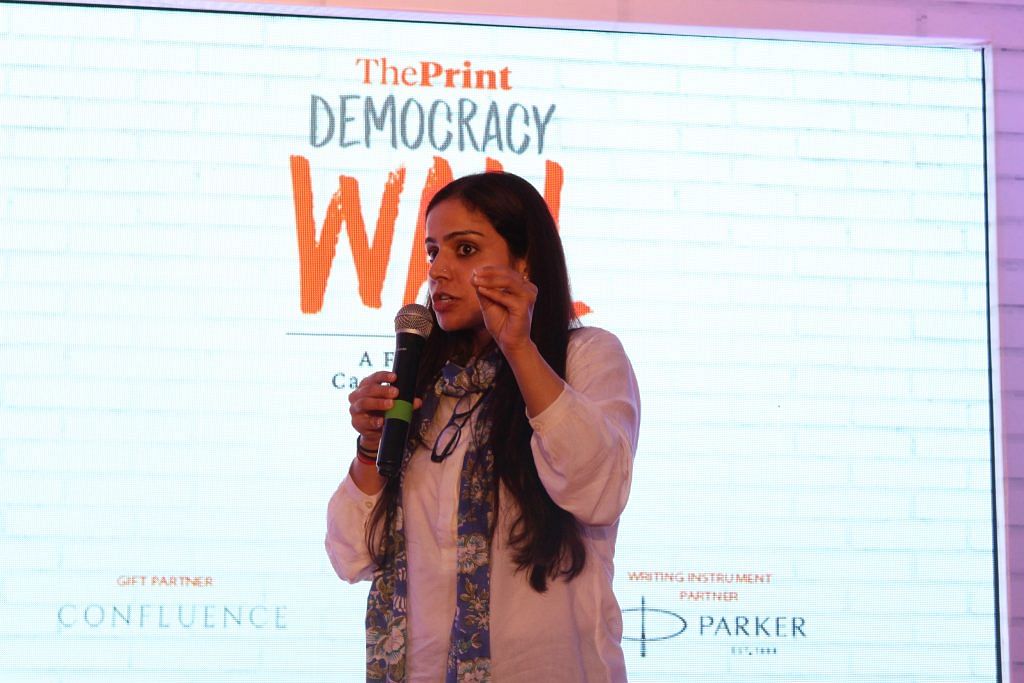New Delhi: When New Delhi-based journalist Pamposh Raina asked the difference between misinformation and disinformation to a room full of law students at Hyderabad’s NALSAR University, barely any hands went up.
Explaining the difference between the two variants of “dangerous fake news trend”, Raina said misinformation can stem from a seemingly innocuous WhatsApp forward, an image or a meme, which people might not think about twice before forwarding to someone.
It may not be verified, we may not know what the source of it is, and we have no clue how “explosive” it can essentially be, she added.
Disinformation, on the other hand, the journalist said is a “more sustained way of manipulating things. There is intent associated with portraying things in a particular fashion, like a political disinformation campaign.”
Raina also emphasised on the need to take more responsibility for the content that is created and shared.
This is the third edition of the ThePrint’s Democracy Wall — a free-speech campus initiative. Congress politician Jaiveer Shergill, actress Shweta Tripathi, and Shekhar Gupta, Editor-in-Chief of ThePrint were also part of the event held Friday.
Need for more media literacy
To counter fake news, Raina stressed on the need for people, specially WhatsApp administrators, to learn the use of tools to confirm the content. Giving the example of Google’s reverse image search, she said people can upload any image and find similar images and other information for the same content.
Such tools can be particularly helpful to verify images with communal undertones, she noted.
“When you receive something [like that], you have to take a second and ask yourself — in a communally-charged country like India, can you repost this thing? Is it ok to repost? What are the consequences?” she said.
Admitting the use of such tools to be cumbersome at times, Raina stated that people also needed to rely on their gut instinct to discern whether something is questionable or not.
Raina noted the limitations of law, coupled with low media literacy, large population and high usage of smartphones in India, contributing to circulation of fake news.
There is anti-fake news legislation being passed in countries like Germany and Malaysia, but in a country of the size of India, laws cannot give a ‘one-size-fits-all’ solution, she said.
Increased media literacy, through collaboration and grassroots efforts, is our best way forward, she concluded.
Also read: If it’s too good to be true, it’s 99.9% false: Fact warrior on how to spot fake news
